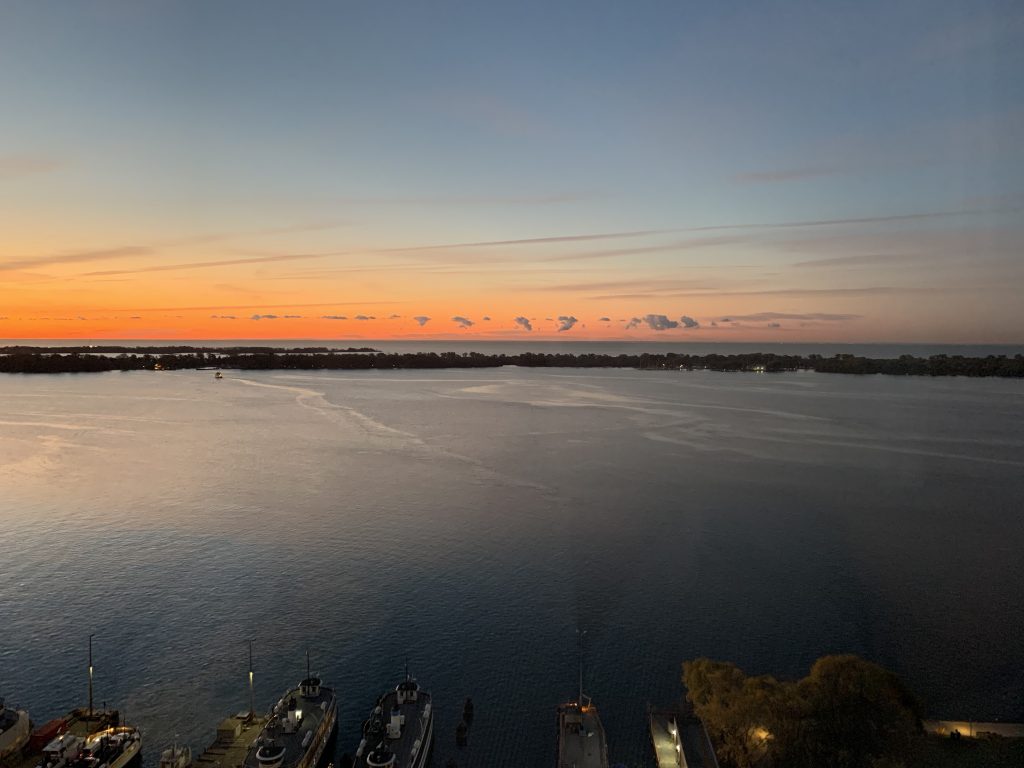Will the Great Lakes Rise With Sea Level?

If you’re on any of the Great Lakes, out of sight of land, they can seem like an ocean. Last week I was in Toronto and snapped this picture of a gorgeous sunrise from my hotel room overlooking Lake Ontario. (A sliver of Lake Ontario can be seen in the far distance, beyond the Inner Harbour and the Toronto Islands.) It’s the second smallest of the five lakes but still nearly two hundred miles long (~300 km).
I was in Canada giving a presentation to the National Association of Environmental Managers. Various questions arose about how the Great Lakes would be affected in the coming decades by rising sea level. Many people incorrectly assume that they will rise as global sea level rises, so this is a good opportunity to clarify.
All five of the Great Lakes are high above sea level. As shown in the elevation profile below, Lake Ontario is the lowest in elevation, 243 feet above sea level; Lake Superior breaks 600 feet. So they are in no direct risk of rising sea level. The biggest drop in elevation is the famous Niagara Falls. A series of canals and locks makes it possible for ocean freight to be shipped in and out of the ports on the Great Lakes. Combined they hold 21% of the world’s freshwater, the second largest lake system in the world. (Only Lake Baikal in Siberia is larger.)
Even though they are isolated from actual sea level rise, they still can have flooding; Lake Ontario has had some serious flooding in recent years. The source is mostly abnormal rainfall and runoff. The phenomenon of record rainfall is entirely consistent with a warming planet, mostly because of increased evaporation from a warming ocean. In fact, the planning authorities in Toronto have now added 30 centimeters, about one foot, to projected water level for Lake Ontario this century.
Understanding the age of the Great Lakes, also helps to understand the process of sea level rise now underway. The Great Lakes were physically formed about ten thousand years ago as the most recent of the great ice sheets retreated northward during the natural warming of the ice age cycles. The Iroquois and several other Native American tribes inhabited the region. Though we think of the lakes as large, they were just modest “gouge marks” a few hundred feet deep; a small effect of the enormous ice sheet and glaciers, ten thousand feet high – two miles or three kilometers. As the ice continued to melt releasing enormous quantities of water, the five lakes filled to their present appearance approximately four thousand years ago, not very long ago in geologic time –– and even in terms of human civilization. Such geologic perspective is very helpful to grasp the changes now underway in a warming world with the two remaining ice sheets on Greenland and Antarctica melting at accelerating rates. That will raise the real sea level far into the future. In comparison, the Great Lakes will be quite stable.
